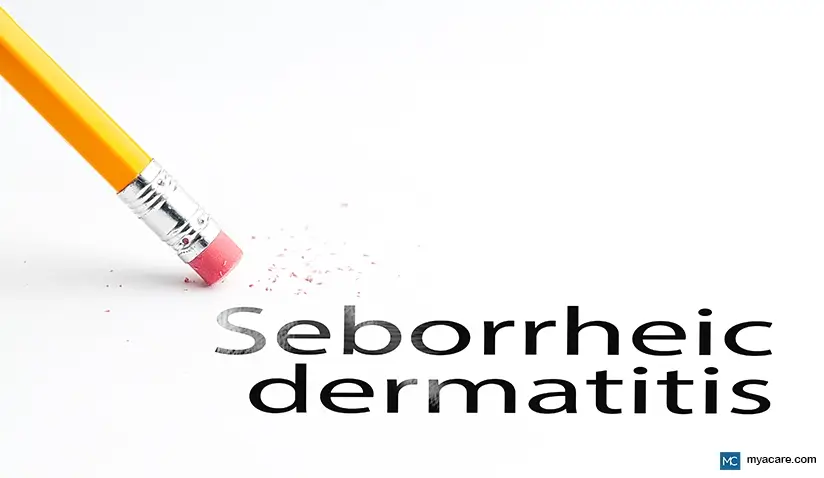Itchy and Scaly: Seborrheic Dermatitis

What is Seborrheic Dermatitis?
Seborrheic dermatitis is a chronic, non-contagious, inflammatory skin disorder that affects seborrheic-rich (or oil-rich) areas of the body, including the scalp, face, upper chest, back, and intertriginous areas (skin folds). It can affect anyone, from infants to adolescents and adults, and is more common in males compared to females. Peak incidence among adults is in the third and fourth decades of life, whereas infantile seborrheic dermatitis can affect babies as early as 2 weeks to 3 months.
What are the Causes of Seborrheic Dermatitis?
The exact cause of seborrheic dermatitis is not completely understood. However, several factors have been observed to contribute to its development.
- Malassezia species – is a genus of fungi that normally lives on the surface of the skin. Overgrowth of Malassezia can cause the body to mount an immune response against it, leading to some skin manifestations.
- Hormones and skin lipids – half of patients with seborrheic dermatitis have oily, sebum-rich skin, which can play a part in the proliferation of Malassezia. Areas of the skin that are rich in sebaceous glands are also the most common areas affected by seborrheic dermatitis. Furthermore, studies have shown that seborrheic dermatitis most commonly appears during puberty and adolescence – a period when there is high production of sebum.
- Immune response – some studies indicate immune dysfunction in patients with seborrheic dermatitis. This is seen most especially in HIV positive and AIDS patients. They tend to have more severe symptoms and can exhibit an atypical presentation of seborrheic dermatitis, often affecting the extremities and other parts of the body.
- Neurogenic factors – seborrheic dermatitis is frequent in some neurological and psychological conditions such as Parkinson’s disease and depression.
- Other medical conditions such as Psoriasis, Epilepsy, Rosacea, Eating disorders, and Recuperation from a heart attack or Stroke can increase the risk for developing seborrheic dermatitis.
Other factors and triggers for Seborrheic Dermatitis include the following:
- Stress
- Cold, dry weather
- Fungal infections
- Nutritional deficits
- Harsh detergents, chemicals, soaps
- Hormonal changes
- Medications such as lithium, psoralen
Symptoms of Seborrheic Dermatitis
Lesions of seborrheic dermatitis usually appear as itchy red patches and plaques with greasy scales and flakes that commonly appear on the scalp, face, eyebrows, ears, nasolabial folds, chest, and intertriginous areas.
Infantile Seborrheic Dermatitis (ISD)
Infantile seborrheic dermatitis presents as a “cradle cap,” which appears on their scalp as scaly, greasy patches and plaques. These lesions can also affect their skin folds such as the armpits and groin area.
What are the treatment options for Seborrheic Dermatitis?
Seborrheic dermatitis is a chronic skin condition; therefore, there really is no cure. The goal of treatment is to control symptoms like itch, redness, and scaling. There are many treatment options available. These include:
- Antifungal medications – considered as the first-line treatment. These topical agents can inhibit the growth of Malassezia. An example is ketoconazole.
- Corticosteroids – can be used in combination with antifungal medications to address the inflammation. However, prolonged use is not advisable, as topical corticosteroids can have side effects such as steroid-induced acne, atrophy of the skin, and telangiectasias.
- Calcineurin inhibitors – these are topical agents that have anti-inflammatory properties, but with a better safety profile compared to corticosteroids. Examples include pimecrolimus and tacrolimus.
- Zinc pyrithione – has antifungal and antimicrobial properties.
- Selenium sulfide – has antifungal properties.
- Phototherapy – is an option for severe or recalcitrant seborrheic dermatitis. However, the disadvantage with this treatment is the rapid relapse of disease when discontinued.
- Systemic/ oral antifungal medications – may be used for cases resistant to topical therapies.
- Tea tree oil – found to have antifungal properties. In one study, the use of tea tree oil decreased pruritus, greasiness, and severity of symptoms.
Infantile Seborrheic Dermatitis
- Topical antifungals and topical corticosteroids may be used, depending on the extent of the symptoms. It is better to consult with a dermatologist before applying any medications.
- Regular washing of the scalp followed by gentle brushing to remove the scales. Emollients like mineral oil or petroleum jelly may be used to gently soften the scales before brushing them off.
- Frequent changes using superabsorbent diapers to prevent exacerbation of symptoms may be done.
Prognosis
Seborrheic dermatitis in adolescents and adults have a chronic, relapsing course. Flares can re-occur when triggered, thus, long-term maintenance is often needed. On the other hand, ISD has a more benign, self-limited course, spontaneously disappearing at around 6-12 months of age. Seborrheic dermatitis often has a negative effect on the quality of life of those affected. It is best to consult with a dermatologist to get proper treatment, as well as to learn how to manage the disease in the long-term.
To search for the best health providers for dermatology in Croatia, Germany, Greece, Italy, Malaysia, Singapore, Slovakia Spain, Thailand, The UAE, the UK, and the US, please use our free search engine.
To search for the best healthcare providers worldwide, please use the Mya Care search engine.
Dr. Lauren Livelo is a board-certified dermatologist from the Philippines. She has a degree in Medicine from the University of the East Ramon Magsaysay Memorial Medical Center, and has completed her dermatology residency training in the Research Institute for Tropical Medicine. Aside from her private practice, she enjoys writing about skin care and diseases of the skin.
References:
Featured Blogs



